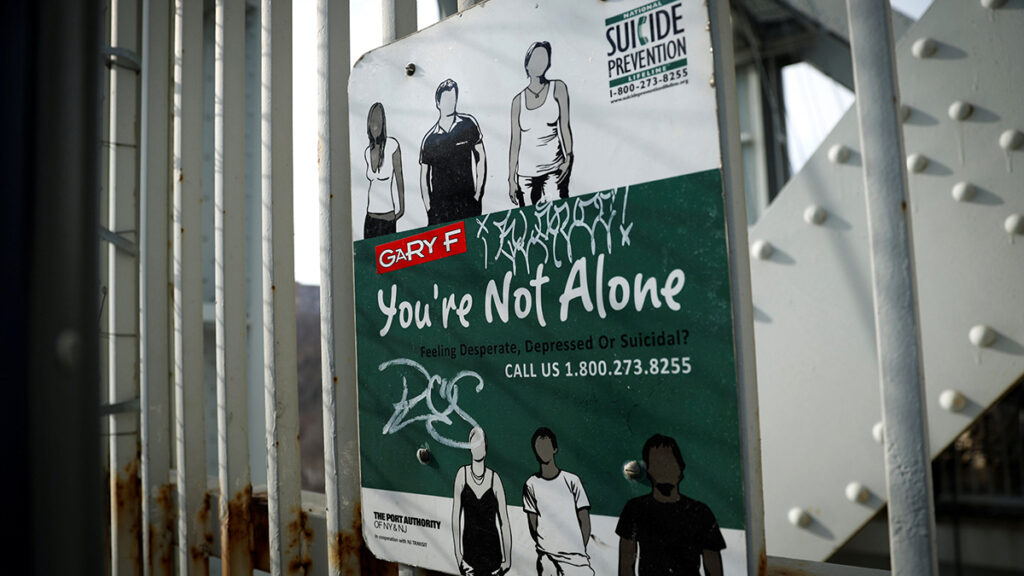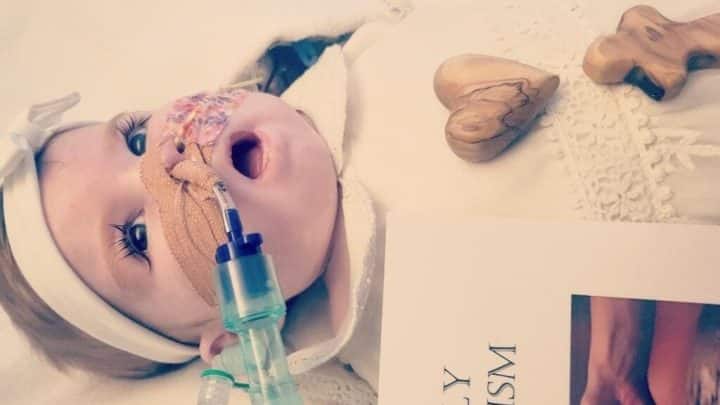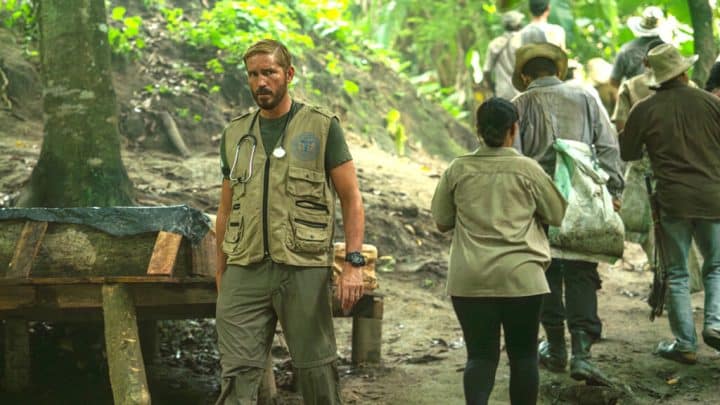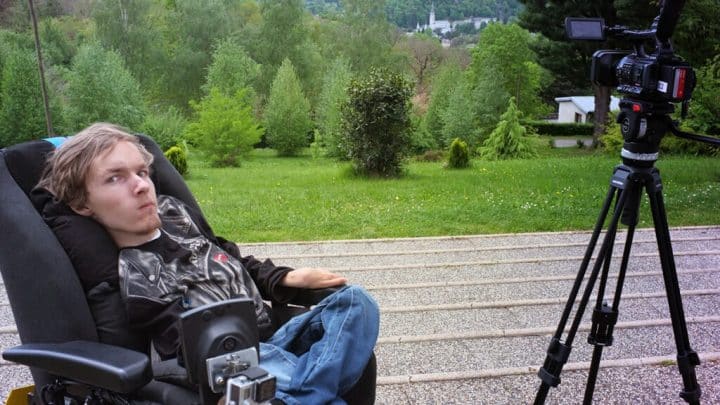
(OSV News) — Suicide, it is sometimes said, is a permanent solution to a temporary problem. But for at least 49,449 Americans during 2022, feelings of distress were so acute they took their own lives.
As CNN recently reported with the release of provisional data from the Centers for Disease Control and Prevention, “the suicide rate spiked in 2021, reversing two years of decline. And with the continued increase in 2022, rates surpassed the previous record from 2018.”
According to the CDC, suicide rates rose 37% between 2000-2018 and decreased 5% between 2018-2020. However, rates nearly returned to their peak in 2021.
“There is no suicide epidemic, as that term is used within epidemiology,” explained David Jobes, a psychology professor at The Catholic University of America in Washington, and director of its Suicide Prevention Lab. “Cause for concern? To be sure!”
A story more frequently overlooked, Jobes thinks, is the high number of those who contemplate suicide. The Substance Abuse and Mental Health Services Administration (SAMHSA) reported that 2021 survey data indicates for every individual suicide death, about 265 people seriously considered suicide in the previous 12 months.
“If we were better at identifying people with serious ideation and treating them upstream,” said Jobes, “we’d have fewer of them going on to attempt and die by suicide.”
Suicide risk factors cited by the CDC include “racism and discrimination in our society, economic hardship, poverty, limited affordable housing, lack of educational opportunities, and barriers to physical and mental health care access.”
Other factors, the CDC adds, are “relationship problems or feeling a lack of connectedness to others, easy access to lethal means among people at risk, experiences of violence such as child abuse and neglect, adverse childhood experiences, bullying, and serious health conditions.”
Deacon Ed Shoener, president of the Association of Catholic Mental Health Ministers, said he wasn’t surprised by the latest CDC figures.
“There’s a misperception out there that people have a rational choice — like Hamlet, ‘To be, or not to be,’” said Deacon Shoener. “Shakespeare used suicide as a plot twist quite often — suggesting that it’s some sort of rational thing. There’s nothing rational about suicide.”
Public attention, emphasized Deacon Shoener, is critical.
“We haven’t placed enough resources into understanding the psychology of suicide — and the mental health issues that go along with it — to be able to get these rates back down,” he said.
“No one wants to die by suicide. I’ve talked to a number of people that have survived the attempt, and they all say — once they’re mentally and psychologically stable — ‘Thank God I didn’t die; I didn’t want to do this,’” Deacon Shoener recalled. “But somehow, their brain gets them to the point where they think it’s the best thing to do — in fact, they think it’s the only thing to do.”
For Deacon Shoener, the pain is personal. In 2016, he lost his own daughter, Katie, to suicide. “This life is not for me,” she wrote in a final note, before turning a gun on herself.
His loss launched Deacon Shoener on a ministry of mental health accompaniment — and his cumulative experience equipped him to suggest ways the Catholic Church can do the same.
Deacon Shoener and Phoenix Bishop John P. Dolan are co-editors of “When a Loved One Dies by Suicide” and its complementary film series, “Responding to Suicide: A Pastoral Handbook for Catholic Leaders” (Ave Maria Press).
“The church’s role in mental health, mental illness and even suicidality, is to reassure people Christ is with them in the midst of their struggles,” Deacon Shoener said. “Just like when someone’s living with cancer, or multiple sclerosis, we can’t make these physical illnesses go away. But what we can do is reassure people Christ is with them; that he understands their suffering.”
And the church can help dissolve the sting of stigma.
“The church can guide people, and reassure them it is a gift from God to go get mental healthcare. You’re not a bad Catholic if you go see a therapist or a counselor, or take psychiatric drugs,” Deacon Shoener stressed. “That’s a gift from God, too.”
Like Deacon Shoener, Marian Father Chris Alar, a provincial superior of the Marian Fathers of the Immaculate Conception, has known the shock of a loved one suddenly taking their life.
“Using a small handgun that was kept in the house for protection, my grandmother shot herself in the bathroom and lay in a pool of blood for what authorities estimated to have been about two hours,” Father Alar wrote in the book he co-wrote with fellow Marian Father Jason Lewis, “After Suicide: There’s Hope for Them and You” (Marian Press).
“The main reason Father Jason Lewis and I wrote the book was to educate and provide a pastoral aid for people who were despairing of their lost loved ones because they had always learned if you take your own life, you are automatically damned to hell,” Father Alar shared. “That is not church teaching — surprising to some — because the only way we lose our soul is to die in an unrepentant state of mortal sin.”
The Catholic Church teaches that for a sin to be mortal, three conditions must be present: grave matter; knowledge that an act is a sin; and free will.
While Father Alar is convinced most people know suicide is both a grave matter and a sin, “it is the third condition we have to look at — you must have complete free will, and want to choose it. Now my grandmother, in taking her life, I know for a fact did not have free will,” he reflected. “She didn’t want to take her life. She was struggling for years with the most intense pain and suffering that she fought, and fought, and fought. And I know God knows she tried to fight the pain and the suffering. She just couldn’t take it anymore.”
The Catechism of the Catholic Church states, “We are stewards, not owners, of the life God has entrusted to us. It is not ours to dispose of. … We should not despair of the eternal salvation of persons who have taken their own lives. By ways known to him alone, God can provide the opportunity for salutary repentance.”
Father Alar stressed God’s compassion is not a basis for presumption. Suicide, he emphasized, is “a very serious sin. It’s never the answer; we can never justify it. But we can have hope in the mercy of God that there is a way for them to still be saved.”
He also agrees with Deacon Shoener that more needs to be done.
“The church is finally learning mental health is a major influence on our spiritual life,” Father Alar observed. “We need to talk to our pastors…We need our people to go to their bishops and dioceses, and request support services for the grieving and for mental health,” said Father Alar. “This is something people need to ask their bishops for.”
Sister Kathryn J. Hermes — a Pauline nun and author of “Surviving Depression: A Catholic Approach” (Pauline Books & Media) — suggests that an immersive homiletic practicum for seminarians could help them realize the impact of their words upon those struggling with mental illness.
“You give a homily,” she imagined, “and in your assembly is someone who’s suicidal; someone who’s manic depressive; someone who’s been abused — a variety of individuals who represent the people you will have in your parish one day. And after you give your homily, you sit down and hear from each one of those people what they heard,” said Sister Hermes. “How do you hold together the truth, and the pastoral reality?”
The goal, said Sister Hermes, isn’t for everyone to become a therapist, but to realize the impact language and actions can have for those struggling with mental health issues.
“Does the parish even see them?” Sister Hermes asked. “People are putting on their Sunday clothes and going to Mass, and they’ve got it together for the time they’re in public — but has anyone touched the depth of the pain? They don’t even realize how much this is needed.”
Kimberley Heatherington writes for OSV News from Virginia.




